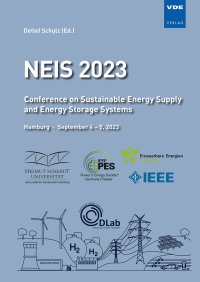Possibilities and Limitations of Frequency-Domain Power Definitions
Conference: NEIS 2023 - Conference on Sustainable Energy Supply and Energy Storage Systems
09/04/2023 at Hamburg, Germany
Proceedings: NEIS 2023
Pages: 6Language: englishTyp: PDF
Authors:
Vahle, Daniel; Staudt, Volker (Institute for Power Systems Technology and Power Mechatronics, Ruhr-Universität Bochum, Germany)
Abstract:
This paper analyses the mathematical and physical boundaries of frequency-domain power definitions. Power definitions decompose the apparent power into orthogonal components providing a basis to rate power systems and to analyse potential causes for an insufficient power quality. In contrast to time-domain power definitions, the frequency domain introduces a larger set of orthogonal coordinates allowing a decomposition into more orthogonal components. These can be used for a more detailed characterization of physical phenomena associated with active and non-active power. A challenge in the frequency domain follows from the DC component, which provides only one orthogonal signal component instead of two as given in case of harmonic oscillations. The existing power theories of L. S. Czarnecki and H. Lev-Ari are evaluated regarding this constraint. It is shown, that Lev-Ari’s extension of the Current’s Physical Components (CPC) by L. S. Czarnecki leads to non-orthogonal current components, if DC and AC components are present in the voltages and currents. This demonstrates, that DC must be treated differently. An improved theory is proposed, that maintains orthogonal current components in case of DC and AC poly-phase voltages and currents. An example illustrates this argument on the DC component.


